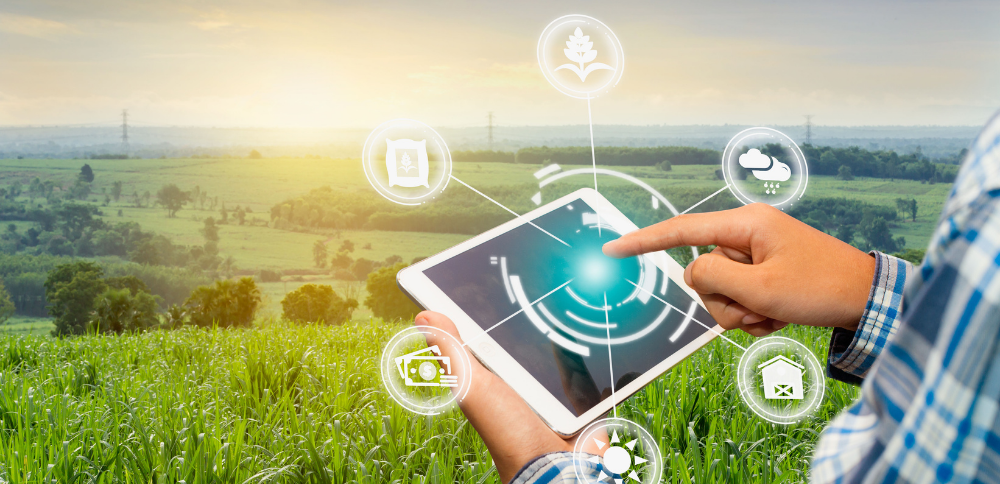The advent of IoT (Internet of Things) in agriculture has revolutionized the way we approach farming and farm management systems. By integrating advanced technologies, farmers can enhance productivity, optimize resource use, and make informed decisions that lead to sustainable agricultural practices. Here, we explore the top trends in IoT for advanced farm management systems, showcasing how this digital transformation is shaping the future of farming.

1. Precision Agriculture
Precision agriculture leverages IoT to collect and analyze data from various sources, such as soil sensors, weather stations, and drones. This data-driven approach allows farmers to apply precise amounts of water, fertilizers, and pesticides, thereby reducing waste and improving crop yields. The use of GPS and IoT-enabled devices helps in mapping fields accurately and monitoring crop health in real-time, ensuring that resources are utilized efficiently.
2. Smart Irrigation Systems
Water management is a critical aspect of farming, especially in regions facing water scarcity. IoT-enabled smart irrigation systems use soil moisture sensors, weather data, and automated controllers to optimize water usage. These systems ensure that crops receive the right amount of water at the right time, reducing water wastage and promoting healthier plant growth. Smart irrigation not only conserves water but also lowers operational costs and boosts crop productivity.
3. Livestock Monitoring
IoT technology extends beyond crops to livestock management. IoT devices, such as wearables and implantable sensors, can monitor the health, location, and activity levels of livestock. This real-time monitoring allows farmers to detect illnesses early, manage breeding cycles, and ensure the well-being of their animals. With IoT, farmers can make data-driven decisions that enhance animal health and farm productivity.
4. Automated Machinery
The integration of IoT with farm machinery has led to the development of autonomous tractors, harvesters, and other equipment. These machines can perform tasks such as planting, weeding, and harvesting with minimal human intervention. IoT sensors and GPS technology enable these machines to navigate fields precisely, perform tasks efficiently, and reduce labor costs. Automation in agriculture not only increases productivity but also addresses labor shortages in the farming industry.
5. Climate Monitoring
Weather conditions play a significant role in agriculture, affecting crop growth and harvest times. IoT-enabled climate monitoring systems provide real-time data on temperature, humidity, rainfall, and wind speed. Farmers can access this information through mobile apps and dashboards, allowing them to make informed decisions about planting, irrigation, and harvesting. By predicting adverse weather conditions, farmers can take preventive measures to protect their crops and ensure optimal yields.
6. Supply Chain Management
IoT technology enhances the transparency and efficiency of the agricultural supply chain. IoT sensors can track the location, temperature, and humidity of produce during transportation and storage. This real-time data helps in maintaining the quality and freshness of products, reducing spoilage and waste. Additionally, IoT-enabled supply chain management systems provide visibility into inventory levels and demand patterns, enabling farmers to manage their supply chain more effectively.
7. Pest and Disease Management
Early detection and control of pests and diseases are crucial for maintaining crop health. IoT devices, such as camera-equipped drones and sensors, can monitor fields for signs of pest infestations and plant diseases. By analyzing this data, farmers can implement targeted interventions, such as applying pesticides only in affected areas. This approach reduces the use of chemicals, minimizes environmental impact, and ensures healthier crops.
8. Data Analytics and Decision Support
The vast amount of data generated by IoT devices in agriculture can be overwhelming. Advanced data analytics and decision support systems help farmers make sense of this data and derive actionable insights. Machine learning algorithms can analyze historical and real-time data to predict crop yields, identify trends, and recommend optimal farming practices. These insights enable farmers to make data-driven decisions that enhance productivity and sustainability.
Conclusion
The integration of IoT in agriculture is transforming traditional farming practices, leading to more efficient, sustainable, and productive farm management systems. By leveraging IoT technology, farmers can monitor and manage their crops and livestock with unprecedented precision, optimize resource use, and make informed decisions that drive agricultural success.
As you explore these top trends in IoT for advanced farm management systems, consider partnering with Kheti Buddy. Kheti Buddy is at the forefront of this digital transformation, offering innovative solutions that incorporate IoT in agriculture to enhance farm management systems. With Kheti Buddy, you can embrace the future of farming, ensuring a sustainable and prosperous agricultural enterprise. Visit Kheti Buddy today to learn more about how our cutting-edge technologies can revolutionize your farming practices.